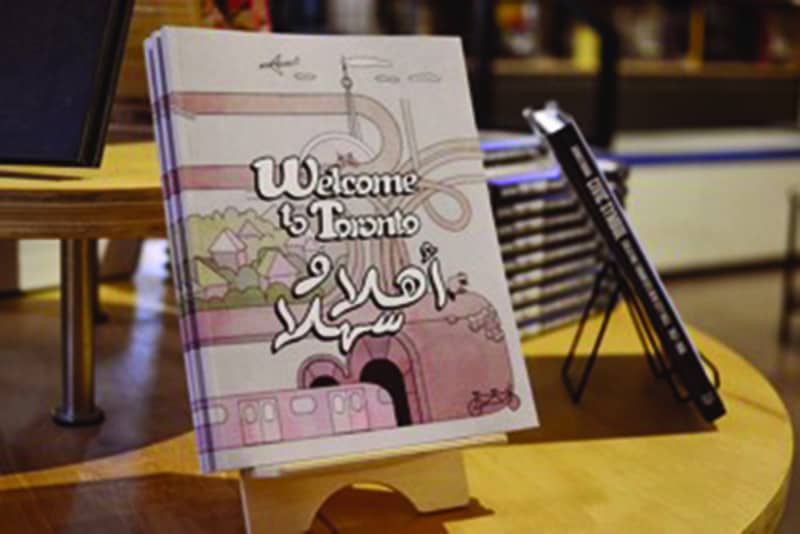[dropcap]F[/dropcap]OLLOWING Canada’s recent admittance of 25,000 Syrian refugees, one thing has become clear: integration into Canadian society now depends on the quality of the opportunities available to them.
Last February, artists Rafi Ghanaghounian, Andrea Pearce, and Nicole Baillargeon undertook an ambitious project in the form of a colouring book for recently arrived Syrian refugees. Their project, a success in Toronto’s new Syrian community, exists at the nexus of art and social justice and is intended to help Syrian children and their families acclimatize to the new environment.
Inspired by an idea from Windsor high-school teacher Bronwen Wood, Pearce and Baillargeon, who are both from Windsor, decided to introduce the project in Toronto. Tapping into the wealth of creative talent the city has to offer, the Welcome to Toronto colouring book features artwork from over 25 Toronto artists. The text under each image is in both English and Arabic.
The book project received financial support from a gofundme.com campaign that helped cover its initial printing costs.
The scenes depicted are a medley of images of some of Toronto’s architectural landmarks, seasonal activities, and favourite pastimes, to introduce Syrian families with Torontonian culture. Adding an individual touch, artists designed images that reflected their personal view of culture in Toronto.
Ghanaghounian revealed that he had an intimate relation to the refugee experience. “I was also interested in the project because of my own background — as I immigrated to Canada from Iraq just before the war with Iran, as well as my grandparents escaping the Armenian genocide,” he explained. “This project let me reconnect with my own history, and also has allowed me to share the pleasures that Toronto has to offer.”
The book is being sold online at keep6.ca and at the Spacing Store, the Aga Khan Museum, and the Gardiner Museum, with the goal of raising enough funds to provide each Syrian family resettling in Toronto with a copy.
The book was launched at the Gladstone Hotel last February with a donation of over 500 books to school boards and organizations like Costi, who also helped with distribution. According to Ghanaghounian and Pearce, feedback from all involved has been positive.
On the project’s attempt to mix art and social justice, Baillargeon, Ghanougian, and Pearce agree that the value of art lies in its communicable aspect. Both likened art to a universal language.
“Art is certainly a natural platform to explore social justice issues. Language and other means of communication can sometimes have limitations that wouldn’t necessarily apply to visual art,” said Pearce. “So much can be expressed in an image; the language of art is universal.”
Ghanaghounian echoes similar sentiments about art’s values: “Art always plays a huge role in any culture and has an ability to bring attention to specific issues that are most relevant to that culture. In this case, art was used to incorporate everyday activities in Toronto to help a specific group encountering numerous challenges to transition more smoothly into their new environment, and it was wonderful to be able to contribute in this way.”



